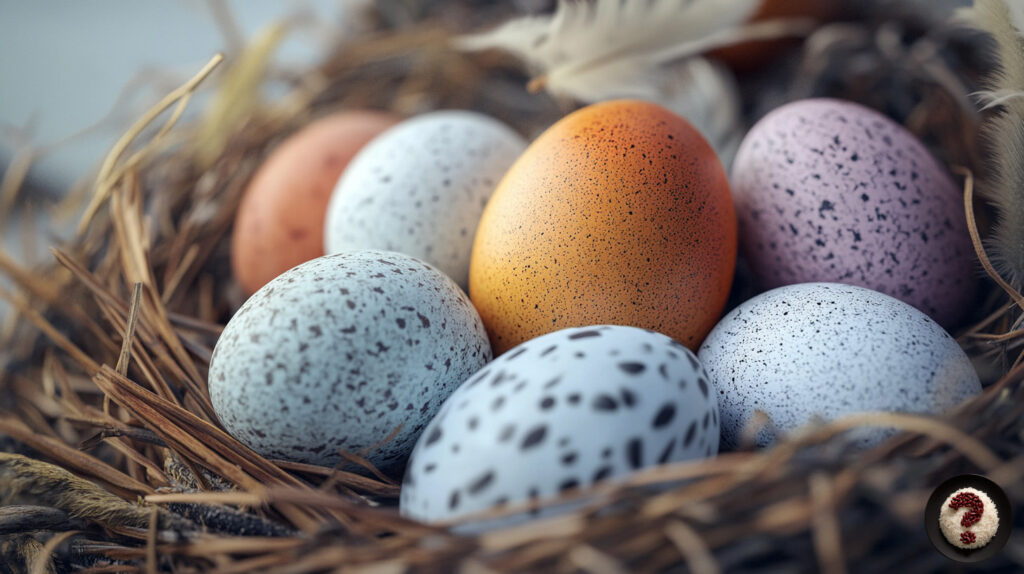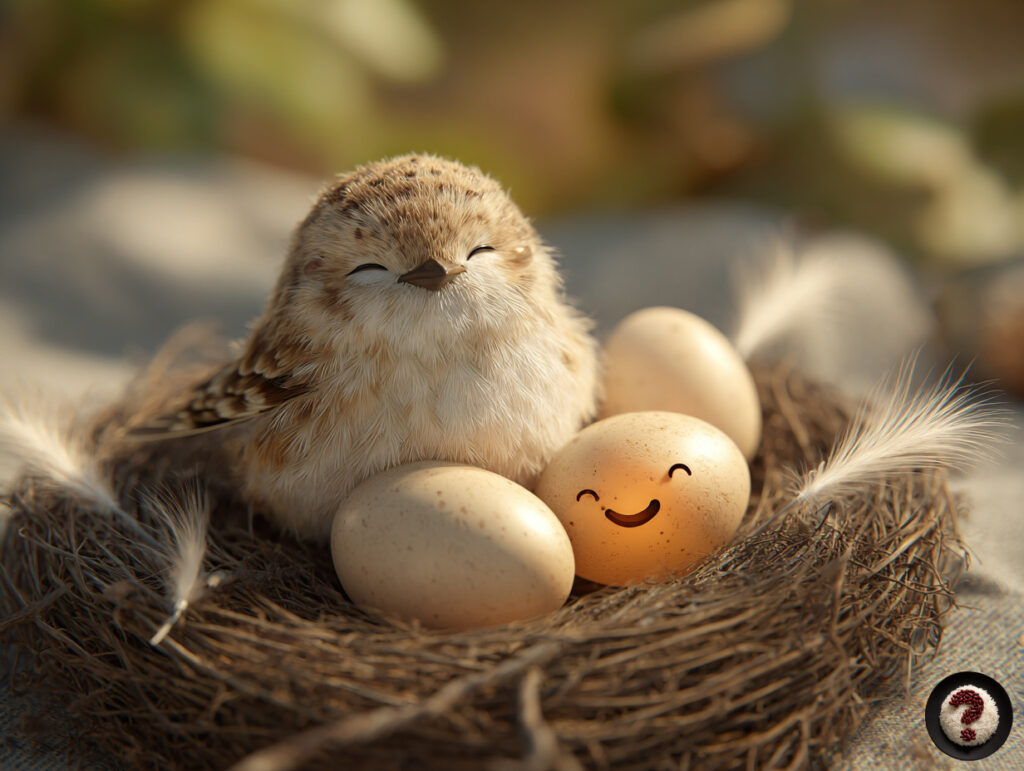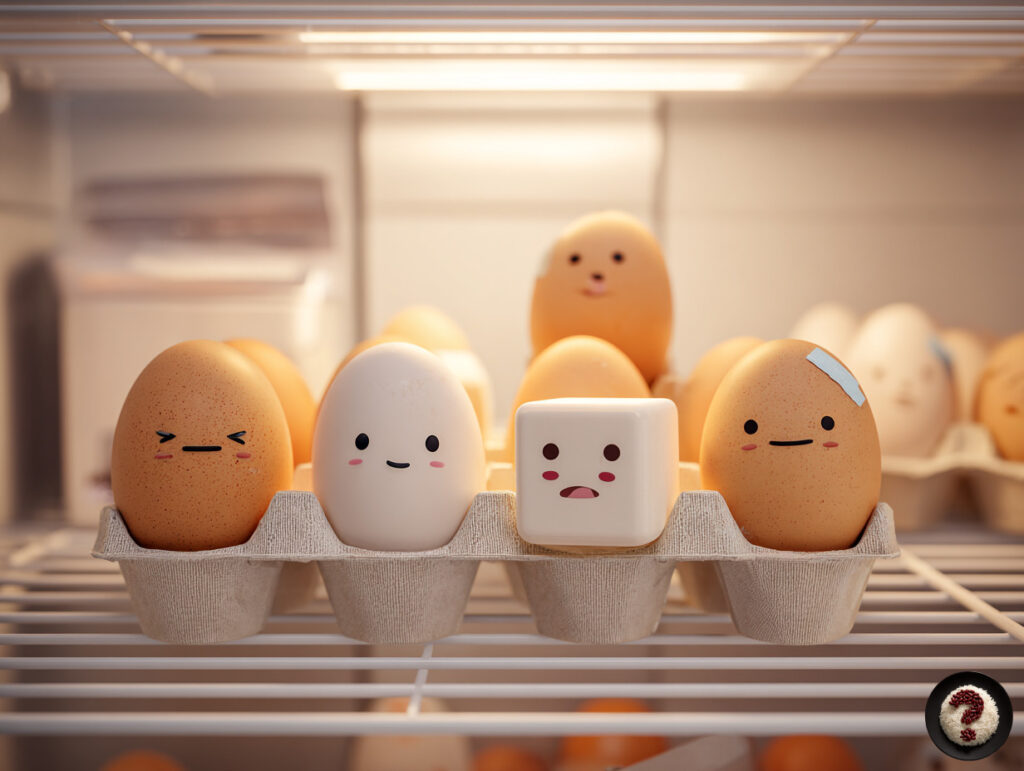
Round Like an Egg: Why Are Bird Eggs Shaped, Not Shapeless?
We have a charming, yet serious scientific question about bird eggs—the ones that drop into the pan at breakfast, that we happily eat with our tea 👀, or that are meticulously guarded in nature documentaries: Why are bird eggs oval? Why aren’t they square, heart-shaped, or triangular, for instance?
Perhaps some of us have never asked this question. We cracked the egg, ate it with pleasure, and moved on. But let’s pause and consider: Let’s take a look at nature’s “shape preference.” Because this shape isn’t a comical sketch; it’s a sheer engineering marvel!
It’s Nature’s Design Competition
Bird eggs are the first-place design winner in nature’s “form and function” category. Every line is carefully considered, optimized for user experience (the bird), and shaped according to what it contains. This oval shape is the physical embodiment of the word “utility” in nature.
It Doesn’t Roll Away, It Spins in Circles!
Think of a bird’s nest: usually concave, sometimes in a narrow tree hollow or on a cliff edge. If the egg were round like a ball, it would roll right out with the slightest tremor. But this beautiful oval shape, even when slightly jostled, begins to spin around its own axis. It acts like an art film character saying, “I’m fed up, but I’m not leaving the nest.”

A Perfect Heat Distributor
The eggs that the mother bird sits sweetly on are resistant to pressure and also distribute heat evenly thanks to their oval shape. This means the little chick inside can grow without complaining, “I’m not warm enough here.” Otherwise, the chick would rebel, saying, “My analog thermos is broken!”
‘Fragile’ But Intelligent
The eggshell is hard, yet thin. However, thanks to its oval shape, it is structurally quite strong. It does not break easily because the pressure applied to it is distributed equally across different points of the shell. Of course, the result is not guaranteed if it falls to the ground, but that’s the fault of gravity.
Each Species’ Egg is Distinctly Cool
Bird eggs aren’t just oval; they also show different sizes, colors, and pointedness depending on the species. Sparrows’ eggs look like tiny beads, while ostrich eggs can reach the size of an “organic bowling ball.” Species with thinner beaks lay thinner and more pointed eggs because for them, the issue is “carrying, not drilling!”
Scientists Took This Subject Seriously
The scientific world has pursued the secrets of this charming egg shape. A 2017 study found a wonderful correlationbetween birds’ flying ability and egg shape. Flying birds lay more pointed and elongated eggs because their body structure requires them to lay in a narrower space. Non-flying birds, being able to spread out comfortably, seem to say, “Let it be big and comfortable.”

Practicality: Nature is Already at the IKEA Level
Imagine, the oval shape is easy to carry, aesthetically pleasing to arrange, and practical to store. Even in the refrigerator, eggs lie in their designated spots. If eggs were square, for instance, they would crack right at the corners. The thought of prism-like eggs sends shivers down our spines. Let them be oval, and let peace prevail.
Colorful Eggs: Camouflage Experts
Since some birds lay their eggs on the soil, sand, or in tree hollows, their eggs are colored like camouflage experts. The spots and wave patterns on them are true nature art. You could call them nature’s miniature “matcha-painted ceramics,” but we think the egg itself steals the show from talented designers.
Egg Culture: Delicious, But Deserving of Respect
We humans view the egg as food, but for a bird, it is life, the future, and the guarantee of grandchildren. So, let’s tip our hats to their structural achievement. Before it lands on our breakfast plate, it is the future of a living creature, the result of evolution. We can look at the yolk and see not just an “eye” but a “journey.”
Conclusion: Nature Designs for Harmony
The oval structure of the bird egg actually shows us this: Nothing in nature is accidental. Aesthetics and practicality go hand-in-hand to bring about a “nest-friendly” design. It sits without breaking, it develops life inside, and it looks beautiful. What more could you ask for!
Next time you glance at an egg at breakfast, let’s say: “You’re not just a delight; you’re a masterpiece of evolution and physics, my egg brother!”
Bonus fact: Some modern architectural buildings have even been designed inspired by the egg shape. These tiny shelled marvels inspire not only breakfast but also architecture.
If you’ve read our article, you can now whisper to every egg in nature, “I can no longer look at you only as an omelet.”
